
Supremacy: AI, ChatGPT, and the Race That Will Change the World
by
Parmy Olson
The best way to test a product was to set it loose. Over the next few months, OpenAI would gradually roll out DALL-E 2, first to a waitlist of about one million people, just in case the system produced offensive or harmful images. Five months later, in an echo of OpenAI’s “Whew, that was fine” verdict that GPT-2 didn’t pose a threat to the world, it threw open the doors for anyone to try DALL-E 2. DALL-E 2 had been trained on millions of images scraped from the public web, but as before, OpenAI was vague about what DALL-E had been trained on. When it successfully conjured images in the style of Picasso, that meant artwork by Picasso had probably been thrown into the training pot.
…
This diffusion approach, combined with an image labeling tool known as CLIP, became the basis of an exciting new model that the researchers called DALL-E 2. The name was an homage to both WALL-E, the 2008 animated film about a robot that escapes planet Earth, and the surrealist painter Salvador Dali. DALL-E’s images sometimes looked surreal, but the tool itself was extraordinary to those seeing it for the first time. If you typed in a text prompt like “chair in the shape of an avocado,” you’d get a series of pictures of just that, many of them uncannily photorealistic. The images were such faithful representations of even the most complicated prompts that within days of its launch, DALL-E 2 was trending on Twitter, with users trying to outdo one another by creating the most outlandish images they could: “a hamster Godzilla in a sombrero attacking Tokyo” or “drunk shirtless guys wandering around Mordor.”
…
Altman was asked about this issue in an interview in April 2022 and characteristically leaned into the controversy, admitting it was a problem, but that OpenAI was working on it. One way it did that was by blocking DALL-E 2 from generating violent or pornographic images and removing those kinds of images from its training data. It also employed human contractors in developing nations like Kenya to steer the model toward more appropriate answers. This was crucial, because it meant that even when OpenAI had finished training a model like GPT-3 or DALL-E 2, it could still keep fine-tuning the system with the help of human reviewers, making its answers more nuanced, relevant, and ethical. By ranking DALL-E 2’s responses on a scale of good to bad, the humans could guide it toward answers that were better overall.

Empire of AI: Dreams and Nightmares in Sam Altman's OpenAI
by
Karen Hao
Published 19 May 2025
Gone were the days when all of it was spent on purely exploratory research, like discussing fundamentally new ideas about how to make a better multimodal model; now a growing fraction of their research was in service of commercialization, such as figuring out how to optimize existing models for serving up to users. After the experience of firefighting text-based child sex abuse with AI Dungeon, of particular concern was the possibility of DALL-E 2 being used to manipulate real or create synthetic child sexual abuse material, or CSAM. As with each GPT model, the training data for each subsequent DALL-E model was growing more and more polluted. For DALL-E 2, the research team had signed a licensing deal with stock photo platform Shutterstock and done a massive scrape of Twitter to add to its existing collection of 250 million images. The Twitter dataset in particular was riddled with pornographic content.
…
But after some discussion, the employees left in other types of sexual images, in part because they felt such content was part of the human experience. Keeping such photos in the training data, however, meant the model would still be able to produce synthetic CSAM. In the same way DALL-E could generate an avocado armchair having only ever seen avocados and armchairs, DALL-E 2 and DALL-E 3 could do the same thing with children and porn for child pornography, a capability known as “compositional generation.” Without filtering the data to address the root of the problem, the burden shifted to building out abuse-prevention mechanisms around the model.
…
GO TO NOTE REFERENCE IN TEXT The first, called CLIP: Alec Radford, Jong Wook Kim, Chris Hallacy, Aditya Ramesh, Gabriel Goh, Sandhini Agarwal et al., “Learning Transferable Visual Models from Natural Language Supervision,” preprint, arXiv, February 26, 2021, 1–48, doi.org/10.48550/arXiv.2103.00020. GO TO NOTE REFERENCE IN TEXT The second, DALL-E 1: OpenAI, “DALL·E: Creating Images from Text,” Open AI (blog), January 5, 2021, openai.com/index/dall-e. GO TO NOTE REFERENCE IN TEXT The original idea: Jascha Sohl-Dickstein, Eric A. Weiss, Niru Maheswaranathan, and Surya Ganguli, “Deep Unsupervised Learning Using Nonequilibrium Thermodynamics,” in ICML ’15: Proceedings of the 32nd International Conference on Machine Learning 37 (July 2015): 2256–65, dl.acm.org/doi/10.5555/3045118.3045358.
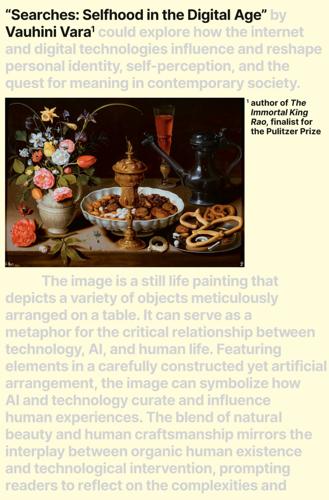
Searches: Selfhood in the Digital Age
by
Vauhini Vara
Published 8 Apr 2025
Illustration Credits 1Courtesy of Vauhini Vara 2Courtesy of Vauhini Vara 3Screenshot from Kevin Systrom’s Instagram 4Image courtesy of Professor Christopher Henshilwood; photo credit: Craig Foster 5AA Oktaviana, photograph of a painting by an unknown artist or artists dating to at least 45,500 years ago at Leang Tedongnge 6Painting by Clara Peeters in Museo Nacional del Prado; image courtesy of Bridgeman Images 7Venus of Willendorf by unknown artist or artists; photo credit: Wikipedia Commons user MatthiasKabel, Creative Commons Attribution 2.5 8African-American Girl Nude, Reclining on Couch by Thomas Eakins; courtesy of Charles Bregler’s Thomas Eakins Collection; purchased with the partial support of the Pew Memorial Trust, courtesy of the Pennsylvania Academy of the Fine Arts, Philadelphia. (1985.68.2.565) 9Domestic Data Streamers Synthetic Memories Project 10Federico Bianchi et al., generated using Stable Diffusion XL in 2022 11Dana Mauriello, generated using OpenAI’s Dall-E 3 in 2024 12© Silvano de Gennaro 13Courtesy of Vauhini Vara 14Vauhini Vara 15Vauhini Vara, generated using OpenAI’s GPT-4o in September 2024 16Vauhini Vara, generated using OpenAI’s GPT-4o in September 2024 17Vauhini Vara, generated using Microsoft Image Creator in July 2024 18Vauhini Vara, generated using Microsoft Image Creator in July 2024 19Vauhini Vara, generated using Microsoft Image Creator in July 2024 20Vauhini Vara, generated using Microsoft Image Creator in June 2024 21Vauhini Vara, generated using Microsoft Image Creator in July 2024 22Vauhini Vara, generated using OpenAI’s GPT-4o in September 2024 23Vauhini Vara, generated using OpenAI’s GPT-4o in September 2024 24Vauhini Vara, generated using OpenAI’s GPT-4o in September 2024 25Vauhini Vara, generated using OpenAI’s Dall-E 3 in July 2024 26Vauhini Vara, generated using OpenAI’s Dall-E 3 in July 2024 27Vauhini Vara, generated using OpenAI’s Dall-E 3 in July 2024 28Vauhini Vara, generated using OpenAI’s Dall-E 3 in July 2024 29Vauhini Vara, generated using OpenAI’s Dall-E 3 in July 2024 30Vauhini Vara, generated using OpenAI’s Dall-E 3 in July 2024 31Vauhini Vara, generated using OpenAI’s Dall-E 3 in July 2024 32Vauhini Vara, generated using OpenAI’s GPT-4o in September 2024 33Vauhini Vara, generated using Microsoft Image Creator in July 2024 34Vauhini Vara, generated using OpenAI’s Dall-E 3 in July 2024 35Vauhini Vara, generated using OpenAI’s GPT-4o in September 2024 36Vauhini Vara, generated using OpenAI’s Dall-E 3 in July 2024 37Vauhini Vara, generated using OpenAI’s Dall-E 3 in July 2024 38Vauhini Vara, generated using OpenAI’s Dall-E 3 in July 2024 39Vauhini Vara, generated using OpenAI’s Dall-E 3 in July 2024 40Vauhini Vara, generated using OpenAI’s Dall-E 3 in July 2024 41Vauhini Vara, generated using OpenAI’s Dall-E 3 in July 2024 42Vauhini Vara, generated using OpenAI’s Dall-E 3 in July 2024 43Vauhini Vara, generated using OpenAI’s Dall-E 3 in July 2024 44Vauhini Vara, generated using OpenAI’s Dall-E 3 in July 2024 45Vauhini Vara, generated using OpenAI’s Dall-E 3 in July 2024 46Vauhini Vara, generated using OpenAI’s Dall-E 3 in July 2024 47Vauhini Vara, generated using OpenAI’s Dall-E 3 in July 2024 48Vauhini Vara, generated using OpenAI’s Dall-E 3 in July 2024 49Vauhini Vara, generated using OpenAI’s Dall-E 3 in July 2024 50Vauhini Vara, generated using OpenAI’s GPT-4o in September 2024 51Vauhini Vara, generated using Microsoft Image Creator in July 2024 52Vauhini Vara, generated using OpenAI’s GPT-4o in September 2024 53Vauhini Vara, generated using Microsoft Image Creator in July 2024 A Note About the Author Vauhini Vara has been a reporter and editor for The Atlantic, The New Yorker, and The New York Times Magazine, and is the prizewinning author of The Immortal King Rao and This Is Salvaged.
…
Illustration Credits 1Courtesy of Vauhini Vara 2Courtesy of Vauhini Vara 3Screenshot from Kevin Systrom’s Instagram 4Image courtesy of Professor Christopher Henshilwood; photo credit: Craig Foster 5AA Oktaviana, photograph of a painting by an unknown artist or artists dating to at least 45,500 years ago at Leang Tedongnge 6Painting by Clara Peeters in Museo Nacional del Prado; image courtesy of Bridgeman Images 7Venus of Willendorf by unknown artist or artists; photo credit: Wikipedia Commons user MatthiasKabel, Creative Commons Attribution 2.5 8African-American Girl Nude, Reclining on Couch by Thomas Eakins; courtesy of Charles Bregler’s Thomas Eakins Collection; purchased with the partial support of the Pew Memorial Trust, courtesy of the Pennsylvania Academy of the Fine Arts, Philadelphia. (1985.68.2.565) 9Domestic Data Streamers Synthetic Memories Project 10Federico Bianchi et al., generated using Stable Diffusion XL in 2022 11Dana Mauriello, generated using OpenAI’s Dall-E 3 in 2024 12© Silvano de Gennaro 13Courtesy of Vauhini Vara 14Vauhini Vara 15Vauhini Vara, generated using OpenAI’s GPT-4o in September 2024 16Vauhini Vara, generated using OpenAI’s GPT-4o in September 2024 17Vauhini Vara, generated using Microsoft Image Creator in July 2024 18Vauhini Vara, generated using Microsoft Image Creator in July 2024 19Vauhini Vara, generated using Microsoft Image Creator in July 2024 20Vauhini Vara, generated using Microsoft Image Creator in June 2024 21Vauhini Vara, generated using Microsoft Image Creator in July 2024 22Vauhini Vara, generated using OpenAI’s GPT-4o in September 2024 23Vauhini Vara, generated using OpenAI’s GPT-4o in September 2024 24Vauhini Vara, generated using OpenAI’s GPT-4o in September 2024 25Vauhini Vara, generated using OpenAI’s Dall-E 3 in July 2024 26Vauhini Vara, generated using OpenAI’s Dall-E 3 in July 2024 27Vauhini Vara, generated using OpenAI’s Dall-E 3 in July 2024 28Vauhini Vara, generated using OpenAI’s Dall-E 3 in July 2024 29Vauhini Vara, generated using OpenAI’s Dall-E 3 in July 2024 30Vauhini Vara, generated using OpenAI’s Dall-E 3 in July 2024 31Vauhini Vara, generated using OpenAI’s Dall-E 3 in July 2024 32Vauhini Vara, generated using OpenAI’s GPT-4o in September 2024 33Vauhini Vara, generated using Microsoft Image Creator in July 2024 34Vauhini Vara, generated using OpenAI’s Dall-E 3 in July 2024 35Vauhini Vara, generated using OpenAI’s GPT-4o in September 2024 36Vauhini Vara, generated using OpenAI’s Dall-E 3 in July 2024 37Vauhini Vara, generated using OpenAI’s Dall-E 3 in July 2024 38Vauhini Vara, generated using OpenAI’s Dall-E 3 in July 2024 39Vauhini Vara, generated using OpenAI’s Dall-E 3 in July 2024 40Vauhini Vara, generated using OpenAI’s Dall-E 3 in July 2024 41Vauhini Vara, generated using OpenAI’s Dall-E 3 in July 2024 42Vauhini Vara, generated using OpenAI’s Dall-E 3 in July 2024 43Vauhini Vara, generated using OpenAI’s Dall-E 3 in July 2024 44Vauhini Vara, generated using OpenAI’s Dall-E 3 in July 2024 45Vauhini Vara, generated using OpenAI’s Dall-E 3 in July 2024 46Vauhini Vara, generated using OpenAI’s Dall-E 3 in July 2024 47Vauhini Vara, generated using OpenAI’s Dall-E 3 in July 2024 48Vauhini Vara, generated using OpenAI’s Dall-E 3 in July 2024 49Vauhini Vara, generated using OpenAI’s Dall-E 3 in July 2024 50Vauhini Vara, generated using OpenAI’s GPT-4o in September 2024 51Vauhini Vara, generated using Microsoft Image Creator in July 2024 52Vauhini Vara, generated using OpenAI’s GPT-4o in September 2024 53Vauhini Vara, generated using Microsoft Image Creator in July 2024 A Note About the Author Vauhini Vara has been a reporter and editor for The Atlantic, The New Yorker, and The New York Times Magazine, and is the prizewinning author of The Immortal King Rao and This Is Salvaged.
…
Illustration Credits 1Courtesy of Vauhini Vara 2Courtesy of Vauhini Vara 3Screenshot from Kevin Systrom’s Instagram 4Image courtesy of Professor Christopher Henshilwood; photo credit: Craig Foster 5AA Oktaviana, photograph of a painting by an unknown artist or artists dating to at least 45,500 years ago at Leang Tedongnge 6Painting by Clara Peeters in Museo Nacional del Prado; image courtesy of Bridgeman Images 7Venus of Willendorf by unknown artist or artists; photo credit: Wikipedia Commons user MatthiasKabel, Creative Commons Attribution 2.5 8African-American Girl Nude, Reclining on Couch by Thomas Eakins; courtesy of Charles Bregler’s Thomas Eakins Collection; purchased with the partial support of the Pew Memorial Trust, courtesy of the Pennsylvania Academy of the Fine Arts, Philadelphia. (1985.68.2.565) 9Domestic Data Streamers Synthetic Memories Project 10Federico Bianchi et al., generated using Stable Diffusion XL in 2022 11Dana Mauriello, generated using OpenAI’s Dall-E 3 in 2024 12© Silvano de Gennaro 13Courtesy of Vauhini Vara 14Vauhini Vara 15Vauhini Vara, generated using OpenAI’s GPT-4o in September 2024 16Vauhini Vara, generated using OpenAI’s GPT-4o in September 2024 17Vauhini Vara, generated using Microsoft Image Creator in July 2024 18Vauhini Vara, generated using Microsoft Image Creator in July 2024 19Vauhini Vara, generated using Microsoft Image Creator in July 2024 20Vauhini Vara, generated using Microsoft Image Creator in June 2024 21Vauhini Vara, generated using Microsoft Image Creator in July 2024 22Vauhini Vara, generated using OpenAI’s GPT-4o in September 2024 23Vauhini Vara, generated using OpenAI’s GPT-4o in September 2024 24Vauhini Vara, generated using OpenAI’s GPT-4o in September 2024 25Vauhini Vara, generated using OpenAI’s Dall-E 3 in July 2024 26Vauhini Vara, generated using OpenAI’s Dall-E 3 in July 2024 27Vauhini Vara, generated using OpenAI’s Dall-E 3 in July 2024 28Vauhini Vara, generated using OpenAI’s Dall-E 3 in July 2024 29Vauhini Vara, generated using OpenAI’s Dall-E 3 in July 2024 30Vauhini Vara, generated using OpenAI’s Dall-E 3 in July 2024 31Vauhini Vara, generated using OpenAI’s Dall-E 3 in July 2024 32Vauhini Vara, generated using OpenAI’s GPT-4o in September 2024 33Vauhini Vara, generated using Microsoft Image Creator in July 2024 34Vauhini Vara, generated using OpenAI’s Dall-E 3 in July 2024 35Vauhini Vara, generated using OpenAI’s GPT-4o in September 2024 36Vauhini Vara, generated using OpenAI’s Dall-E 3 in July 2024 37Vauhini Vara, generated using OpenAI’s Dall-E 3 in July 2024 38Vauhini Vara, generated using OpenAI’s Dall-E 3 in July 2024 39Vauhini Vara, generated using OpenAI’s Dall-E 3 in July 2024 40Vauhini Vara, generated using OpenAI’s Dall-E 3 in July 2024 41Vauhini Vara, generated using OpenAI’s Dall-E 3 in July 2024 42Vauhini Vara, generated using OpenAI’s Dall-E 3 in July 2024 43Vauhini Vara, generated using OpenAI’s Dall-E 3 in July 2024 44Vauhini Vara, generated using OpenAI’s Dall-E 3 in July 2024 45Vauhini Vara, generated using OpenAI’s Dall-E 3 in July 2024 46Vauhini Vara, generated using OpenAI’s Dall-E 3 in July 2024 47Vauhini Vara, generated using OpenAI’s Dall-E 3 in July 2024 48Vauhini Vara, generated using OpenAI’s Dall-E 3 in July 2024 49Vauhini Vara, generated using OpenAI’s Dall-E 3 in July 2024 50Vauhini Vara, generated using OpenAI’s GPT-4o in September 2024 51Vauhini Vara, generated using Microsoft Image Creator in July 2024 52Vauhini Vara, generated using OpenAI’s GPT-4o in September 2024 53Vauhini Vara, generated using Microsoft Image Creator in July 2024 A Note About the Author Vauhini Vara has been a reporter and editor for The Atlantic, The New Yorker, and The New York Times Magazine, and is the prizewinning author of The Immortal King Rao and This Is Salvaged.
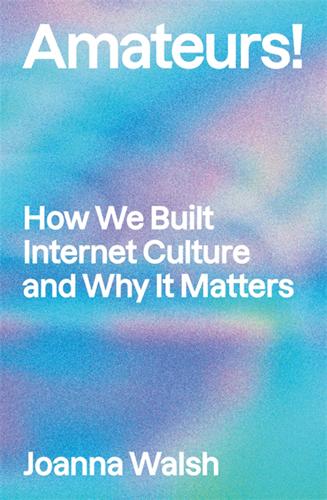
Amateurs!: How We Built Internet Culture and Why It Matters
by
Joanna Walsh
Published 22 Sep 2025
Art made with AI is outside the domain of art, in that it is outside the systems that produce and disseminate art; and yet it is not. Its productions are made for fun by users – amateurs – but have a finish formerly only attainable by professional artists, as they are made using their work. They look like art, but not quite. They are a mashup of fragments. This ‘illustration’ (the commercial-art term is DALL·E) is by ‘August Kamp × DALL·E, created via its Outpainting app, from Girl with a Pearl Earring by Johannes Vermeer’. AI art extenders treat art like a fragment of reality. Cropping is a term from photography, which implies that the artist has selected a particular view or moment, a fragment of an existence beyond the frame.
…
Capitalism’s decontextualisation of everything, its ‘conversion of practices and rituals into merely aesthetic objects’, led Fisher to speculate: ‘Capitalist realism is therefore not a particular type of realism; it is more like realism in itself.’5 If capitalism is like realism, then it is mimetic of a certain style of art. It is aesthetic. How does this play out in the cost-and-consequence-free reproduction of objects in the cod-Vermeer, overcluttered interior created via the intensely capitalised DALL·E? Now that capitalism has all the best apps, is everything recuperable? AI art, rather than stripping objects of their contexts, drops familiar objects into a different familiar context. You can view Kamp/DALL·E’s final new Vermeer, or you can watch a stop-motion video that shows the machine taking real-time decisions about how to expand the work, positing, erasing and outpainting a range of extensions.
…
I copied the text and went back to an image generator – DALL·E. a woman taking a picture of herself in a mirror, inspired by Elfriede Lohse-Wachtler, tumblr contest winner, arbeitsrat für kunst, wearing a white button up shirt, freedom fr | Generate 111I fed the resulting picture back to CLIP Interrogator, which produced more words. Output a man taking a picture of himself in a mirror, inspired by Marina Abramovic´, neo-romanticism, white waist apron and undershirt, lucio as a woman, before and after, dominik mayer, button-up shirt, androgynous male, feedback loop, uncropped, dress in white Back to DALL·E. Then to CLIP Interrogator again, which changed the colour of my shirt, my aesthetic references and my gender.

The Singularity Is Nearer: When We Merge with AI
by
Ray Kurzweil
Published 25 Jun 2024
BACK TO NOTE REFERENCE 103 Jeff Dean, “Google Research: Themes from 2021 and Beyond,” Google Research, January 11, 2022, https://ai.googleblog.com/2022/01/google-research-themes-from-2021-and.html. BACK TO NOTE REFERENCE 104 For examples of DALL-E’s remarkably creative images, see Aditya Ramesh et al., “Dall-E: Creating Images from Text,” OpenAI, January 5, 2021, https://openai.com/research/dall-e. BACK TO NOTE REFERENCE 105 “Dall-E 2,” OpenAI, accessed June 30, 2022, https://openai.com/dall-e-2. BACK TO NOTE REFERENCE 106 Chitwan Saharia et al., “Imagen,” Google Research, Brain Team, Google, accessed June 30, 2022, https://imagen.research.google.
…
This is the equivalent of showing an image-focused AI only five images of something unfamiliar, like unicorns (instead of five thousand or five million, as previous methods required), and getting it to recognize new unicorn images, or even create unicorn images of its own. But DALL-E and Imagen took this a dramatic step further by excelling at “zero-shot learning.” DALL-E and Imagen could combine concepts they’d learned to create new images wildly different from anything they had ever seen in their training data. Prompted by the text “an illustration of a baby daikon radish in a tutu walking a dog,” DALL-E spat out adorable cartoon images of exactly that. Likewise for “a snail with the texture of a harp.” It even created “a professional high quality emoji of a lovestruck cup of boba”—complete with heart eyes beaming above the floating tapioca balls.
…
Previous AI systems had generally been limited to inputting and outputting one kind of data—some AI focused on recognizing images, other systems analyzed audio, and LLMs conversed in natural language. The next step was connecting multiple forms of data in a single model. So OpenAI introduced DALL-E (a pun on surrealist painter Salvador Dalí and the Pixar movie WALL-E),[105] a transformer trained to understand the relationship between words and images. From this it could create illustrations of totally novel concepts (e.g., “an armchair in the shape of an avocado”) based on text descriptions alone. In 2022 came its successor, DALL-E 2,[106] along with Google’s Imagen and a flowering of other models like Midjourney and Stable Diffusion, which quickly extended these capabilities to essentially photorealistic images.[107] Using a simple text input like “a photo of a fuzzy panda wearing a cowboy hat and black leather jacket riding a bike on top of a mountain,” the AI can conjure up a whole lifelike scene.[108] This creativity will transform creative fields that recently seemed strictly in the human realm.

The Optimist: Sam Altman, OpenAI, and the Race to Invent the Future
by
Keach Hagey
Published 19 May 2025
In spring 2022, OpenAI dazzled with its update of its image-based generator, dubbed DALL-E 2. While the original DALL-E had been based on GPT-3, the new version was a diffusion model trained by adding digital “noise” to an image and then teaching the model to carefully remove it as though it was restoring a Rembrandt. Eventually, it could generate new, photorealistic images on command, such as “a Corgi riding a skateboard through Times Square” or “a futuristic city made of candy.” Keenly aware of the potential for abuse, OpenAI proceeded slowly, dribbling out access to a waitlist of a million users over five months before offering DALL-E 2 to everyone. Observing from afar, Brian Chesky, the Airbnb CEO whose worlds had overlapped with Altman’s for years, became both excited and alarmed.
…
Afterwards, as the pink sunset gave way to a star-flooded Idaho sky, Chesky gathered at a picnic table with Altman, Pichai, and a few other tech CEOs to debrief. Altman said he’d love to talk to Chesky more about how to run a company. Chesky said he’d love to talk to Altman more about the implications of DALL-E. “This can either be a tool for creatives or it can replace creatives,” Chesky told Altman. “It depends if you build it with the creative community or not.” Chesky started visiting Altman’s office for regular talks. Altman had mentored Chesky. Now Chesky would mentor Altman. DALL-E 2 did, in fact, outrage many creative types. A few months after Chesky’s warning to Altman in Sun Valley, a Polish artist named Greg Rutkowski, famous for applying the luminous techniques of masters like Vermeer to fantasy video game subjects like dragons, joined a class action lawsuit against an open source company that used technology similar to OpenAI, after learning that his art style had been requested more than Picasso’s on the tool.17 But OpenAI’s biggest fears about DALL-E were over its ability to convince people of things that weren’t true with deepfakes.
…
“We were the most GPU-intensive game ever released, and it was a text adventure.” After a while, they decided to move to a different AI partner. “It was like, ‘We will spend all our revenue on AI. We really can’t make this work,’ ” Walton said.2 At the start of 2021, OpenAI used GPT-3 to power a model that could conjure images out of text instructions. They called it DALL-E, a nod to both Disney’s WALL-E and Salvador Dali. Its first publicly available image was “a baby daikon radish in a tutu walking a dog.” The radish was lumpy and simple, in a cartooning style that made South Park look like Ingres. But it was indeed wearing a tutu and walking a dog. The advances allowed Altman to make his most forceful case yet for his role in reshaping society.

The Age of AI: And Our Human Future
by
Henry A Kissinger
,
Eric Schmidt
and
Daniel Huttenlocher
Published 2 Nov 2021
Will Douglas Heaven, “DeepMind Says Its New Language Model Can Beat Others 25 Times Its Size,” MIT Technology Review, December 8, 2021, https://www.technologyreview.com/2021/12/08/1041557/deepmind-language-model-beat-others-25-times-size-gpt-3-megatron/. 5. Ilya Sutskever, “Fusion of Language and Vision,” The Batch, December 20, 2020, https://read.deeplearning.ai/the-batch/issue-72/. 6. “Dall·E 2,” OpenAI.com, https://openai.com/dall-e-2/. 7. Cade Metz, “Meet Dall-E, the A.I. That Draws Anything at Your Command,” New York Times, April 6, 2022, https://www.nytimes.com/2022/04/06/technology/openai-images-dall-e.html 8. Robert Service, “Protein Structures for All,” Science, December 16, 2021, https://www.science.org/content/article/breakthrough-2021. 9. David F. Carr, “Hungarian Gov Teams Up with Eastern European Bank to Develop AI Supercomputer,” VentureBeat, December 9, 2021, https://venturebeat.com/2021/12/09/hungarian-gov-teams-up-with-eastern-european-bank-to-develop-ai-supercomputer/. 10.
…
As OpenAI’s chief scientist predicted at the end of 2020, language models have “start[ed] to become aware of the visual world.”5 Multimodality, the ability of text-trained language models to process and generate audio and visual media, is a burgeoning field of exploration. The most prominent current example is DALL·E 2 from OpenAI, announced in early 2022.6 DALL·E 2 can create photographic images or professional-quality artwork based on arbitrary text descriptions. For example, it has generated realistic images of “cats playing chess” and “a living room filled with sand, sand on the floor, with a piano in the room.”7 These are original images, although originality does not always mean creativity.
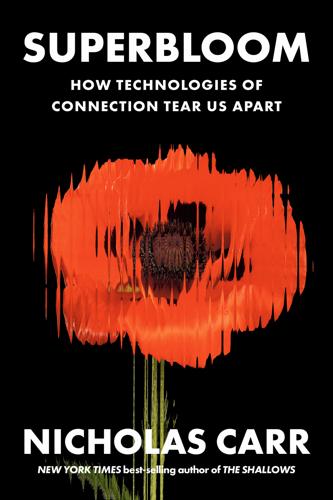
Superbloom: How Technologies of Connection Tear Us Apart
by
Nicholas Carr
Published 28 Jan 2025
Stearn (New York: Dial, 1967), 280. 36.See, among many other press reports, Abby Ohlheiser, “Trolls Turned Tay, Microsoft’s Fun Millennial Bot, into a Genocidal Maniac,” Washington Post, May 25, 2016. 37.Peter Lee, “Learning from Tay’s Introduction,” Official Microsoft Blog, March 25, 2016, https://blogs.microsoft.com/blog/2016/03/25/learning-tays-introduction/. 38.Andersen, “Inside the Revolution.” 39.“DALL-E Pre-Training Mitigations,” OpenAI, June 28, 2022, https://openai.com/research/dall-e-2-pre-training-mitigations. 40.Tom Warren, “Google Pauses Gemini’s Ability to Generate AI Images of People after Diversity Errors,” Verge, February 22, 2024. 41.Prabhakar Raghavan, “Gemini Image Generator Got It Wrong. We’ll Do Better,” Google Blog, February 23, 2024, https://blog.google/products/gemini/gemini-image-generation-issue/. 42.Andersen, “Inside the Revolution.” 43.Elon Musk, X, November 28, 2022, https://twitter.com/elonmusk/status/1597405399040217088. 44.Angel Eduardo, “Twitter Is No Free Speech Haven under Elon Musk,” FIRE, April 12, 2023.
…
Subtly altering a person’s features to obscure or exaggerate ethnic traits was particularly popular, for cosmetic and propagandistic purposes alike.27 But the old fakes were time-consuming to create and required specialized expertise. Even Bendiksen’s fabrications, though made with a computer, required months of painstaking, skilled work. The new AI-generated “deepfakes” are different. By automating their production, tools like Midjourney and OpenAI’s DALL-E make the images easy to generate—you need only enter a text prompt. They democratize counterfeiting. Even more worrisome than the efficiency of their production is the fact that the fakes conjured up by artificial intelligence lack any referents in the real world. There’s no trail behind them that leads back to a camera recording an image of something that actually exists.
…
Companies like OpenAI don’t just censor the outputs of their LLMs. They censor the inputs. They know that the best way to prevent a chatbot from giving voice to humanity’s darker or more controversial thoughts is to avoid exposing the bot to those thoughts in the first place. In preparing the dataset of millions of images used to train DALL-E, for example, OpenAI went through a rigorous process of “data filtering” to limit “undesirable model capabilities.” It ran the pictures through “image classifiers” to identify and remove potentially offensive ones, such as those depicting violence or sex. In culling images from the training data, OpenAI erred on the side of caution, removing pretty much anything the software deemed suspicious.

Co-Intelligence: Living and Working With AI
by
Ethan Mollick
Published 2 Apr 2024
,” in Proceedings of the 2021 ACM Conference on Fairness, Accountability, and Transparency (New York: Assocation for Computing Machinery, 2021), 610–23. GO TO NOTE REFERENCE IN TEXT Some of them just cheat: T. H. Tran, “Image Generators Like DALL-E Are Mimicking Our Worst Biases,” Daily Beast, September 15, 2022, https://www.thedailybeast.com/image-generators-like-dall-e-are-mimicking-our-worst-biases. GO TO NOTE REFERENCE IN TEXT When forced to give political opinions: J. Baum and J. Villasenor, “The Politics of AI: ChatGPT and Political Bias,” Brookings, May 8, 2023, https://www.brookings.edu/articles/the-politics-of-ai-chatgpt-and-political-bias/.
…
When we discuss AI in this book, we will mostly be discussing Large Language Models built in this way, but they are not the only kind of “generative AI” that are causing transformation and change. In the same year that ChatGPT had its breakthrough moment, a separate set of AIs, those designed to create images, also appeared on the market with names like Midjourney and DALL-E. These AI tools can create high-quality images based on prompts from users, either aping the style of famous artists (“draw Mickey Mouse in the style of Van Gogh”) or creating ultrarealistic photographs that are indistinguishable from real ones. Just like LLMs, these tools had been in development for years, though only recently did the technology allow for them to become truly useful.
…
It can also impact the people who belong to those groups, who are more likely to be misrepresented or underrepresented by these powerful technologies. AI companies have been trying to address this bias in a number of ways, with differing levels of urgency. Some of them just cheat, like the image generator DALL-E, which covertly inserted the word female into a random number of requests to generate an image of “a person,” in order to force a degree of gender diversity that is not in the training data. A second approach could be to change the datasets used for training, encompassing a wider swath of the human experience, although, as we have seen, gathering training data has its own problems.
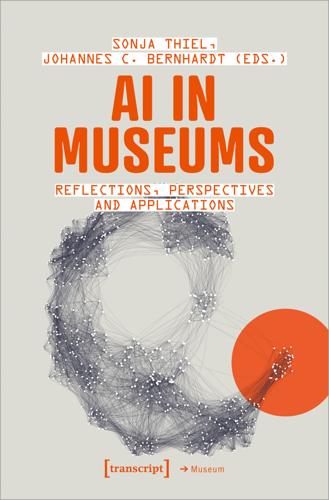
AI in Museums: Reflections, Perspectives and Applications
by
Sonja Thiel
and
Johannes C. Bernhardt
Published 31 Dec 2023
Arguing based on phenomenological and analytical positions (especially that of John McDowell), a thinking being can only be spoken of if representations of the world are not only processed but also understood—his central thesis: a thinking being must be a bearer of some form of life. In his paper, ‘AI and Art: Arguments for Practice’, Arno Schubbach takes up the issue, rekindled by image generators such as Dall-E, of whether AI can be creative and produce art. In a fascinating recourse to the experimental works of Michael Noll from the 1960s, he argues that humans and their input are still the decisive factor in the production of art—the discussion should thus rather be about how AI can be productively integrated into creative practices.
…
At the same time, they need other input to guide the process of de-noising: this guidance is provided by a text prompt describing the target picture. This approach also created such a buzz in 2022 because the technology became available very quickly and is relatively easy to use, from Midjourney by the company of the same name, which was used by Jason M. Allen, to OpenAI’s DALL-E 2 and Stability AI’s Stable Diffusion, which has become the most popular model: it requires less computing power and was made openly available, so that it was used so frequently that it nearly gave rise to its own flood of images.8 Given these unquestionable advances in computer-assisted picture generation over all previous approaches and especially over the simple programs from the 1960s, it may be tempting to take up Noll’s question of ‘man or machine’ and answer it now 6 7 8 For GANs used in the field of AI-generated art, see the seminal paper Goodfellow/PougetAbadie/Mirza et al. 2014 and the overview by Maerten/Soydaner 2023, 14–17.
…
The authors, researchers, and developers, based at universities and research institutions, come from a wide range of disciplines such as computer science, programming, behavioural and cognitive science, linguistics and literary studies, 2 3 4 https://themuseumsai.network (all URLs here accessed in June 2023). https://livia-ai.github.io. https://www.artsmetrics.com/en/list-of-artificial-intelligence-ai-initiatives-in-museums/. Isabel Hufschmidt: Troubleshoot? neuroscience, physics, mathematics, industrial and civil engineering, industrial design, art history, cultural studies, educational and social sciences, media studies, and archaeology. Figure 1: DALL·E / OpenAI; prompt by Claudia Larcher, 2023. Topics include the use of AI for exhibition scheduling (Lee/Lin 2010), camera placement (Li 2013), security systems (Garzia 2022), conservation concepts (La Russa/Santagati 2021), acoustic comfort in exhibition spaces (D’Orazio/Montoschi et al. 2020), visitor tracking (Onofri/Corbetta 2022), visitor flow management (Centorrino/Corbetta et al. 2021), predictive analysis of tourist flows (Gao 2021), routing (Hsieh 2017) and route planning (Xu/Guo et al. 2021) for visitors, and even the creation of attractive branding (Chiou/Wang 2018) and deepfake presentations (Mihailova 2021).

Four Battlegrounds
by
Paul Scharre
Published 18 Jan 2023
It can allow for models that can connect concepts across different types of data, such as explaining the content of images in words or creating new images based on text descriptions. Text-to-image models, such as OpenAI’s DALL·E and DALL·E 2, Google Brain’s Imagen, and Stability AI’s Stable Diffusion, can create new AI-generated images based on a text description. Multimodal training data can lead to models that have a richer understanding of the world. DALL·E’s concept of a “cat,” for example, encompasses pictures of actual cats, cartoon sketches of cats, and the word “cat.” Researchers have discovered that the multimodal models actually have artificial neurons tied to underlying concepts.
…
For an analysis of overall trends in model size, see Pablo Villalobos et al., Machine Learning Model Sizes and the Parameter Gap (arXiv.org, July 5, 2022), https://arxiv.org/pdf/2207.02852.pdf. 295multimodal models: Ilya Sutskever, “Multimodal,” OpenAI Blog, January 2021, https://openai.com/blog/tags/multimodal/; Aditya Ramesh et al., “DALL·E: Creating Images from Text,” OpenAI Blog, January 5, 2021, https://openai.com/blog/dall-e/; Aditya Ramesh et al., Zero-Shot Text-to-Image Generation (arXiv.org, February 26, 2021), https://arxiv.org/pdf/2102.12092.pdf; Alec Radford et al., “CLIP: Connecting Text and Images,” OpenAI Blog, January 5, 2021, https://openai.com/blog/clip/; Alec Radford et al., Learning Transferable Visual Models From Natural Language Supervision (arXiv.org, February 26, 2021), https://arxiv.org/pdf/2103.00020.pdf; Gabriel Goh et al., “Multimodal Neurons in Artificial Neural Networks,” OpenAI Blog, March 4, 2021, https://openai.com/blog/multimodal-neurons/; Romero, “GPT-3 Scared You?” 295Text-to-image models: Ramesh et al., “DALL·E”; Ramesh et al., Zero-Shot Text-to-Image Generation; Aditya Ramesh et al., “DALL·E 2,” OpenAI Blog, n.d., https://openai.com/dall-e-2/; Aditya Ramesh et al., Hierarchical Text-Conditional Image Generation with CLIP Latents (arXiv.org, April 13, 2022), https://arxiv.org/pdf/2204.06125.pdf; Chitwan Saharia et al., “Imagen,” Google Research, n.d., https://imagen.research.google/; Chitwan Saharia et al., Photorealistic Text-to-Image Diffusion Models with Deep Language Understanding (arXiv.org, May 23, 2022), https://arxiv.org/pdf/2205.11487.pdf; Emad Mostaque, “Stable Diffusion Public Release,” Stability AI blog, August 22, 2022, https://stability.ai/blog/stable-diffusion-public-release; Emad Mostaque, “Stable Diffusion Launch Announcement,” Stability AI blog, August 10, 2022, https://stability.ai/blog/stable-diffusion-announcement. 295artificial neurons tied to underlying concepts: Goh et al., “Multimodal Neurons in Artificial Neural Networks” (OpenAI Blog); Gabriel Goh et al., “Multimodal Neurons in Artificial Neural Networks” (full paper), distill.pub, March 4, 2021, https://distill.pub/2021/multimodal-neurons/; “Unit 550,” OpenAI Microscope, n.d., https://microscope.openai.com/models/contrastive_4x/image_block_4_5_Add_6_0/550 295larger, more diverse datasets: Radford et al., Learning Transferable Visual Models From Natural Language Supervision. 295Gato: Scott Reed et al., “A Generalist Agent,” DeepMind blog, May 12, 2022, https://www.deepmind.com/publications/a-generalist-agent; Scott Reed et al., A Generalist Agent (arXiv.org, May 19, 2022), https://arxiv.org/pdf/2205.06175.pdf. 295interrogate the inner workings of multimodal models: Goh et al., “Multimodal Neurons in Artificial Neural Networks” (full paper). 295new ways of attacking models: Goh et al., “Multimodal Neurons in Artificial Neural Networks” (full paper). 296trend toward ever-larger AI models: Jared Kaplan et al., Scaling Laws for Neural Language Models (arXiv.org, January 23, 2020), https://arxiv.org/pdf/2001.08361.pdf.
…
For an analysis of overall trends in model size, see Pablo Villalobos et al., Machine Learning Model Sizes and the Parameter Gap (arXiv.org, July 5, 2022), https://arxiv.org/pdf/2207.02852.pdf. 295multimodal models: Ilya Sutskever, “Multimodal,” OpenAI Blog, January 2021, https://openai.com/blog/tags/multimodal/; Aditya Ramesh et al., “DALL·E: Creating Images from Text,” OpenAI Blog, January 5, 2021, https://openai.com/blog/dall-e/; Aditya Ramesh et al., Zero-Shot Text-to-Image Generation (arXiv.org, February 26, 2021), https://arxiv.org/pdf/2102.12092.pdf; Alec Radford et al., “CLIP: Connecting Text and Images,” OpenAI Blog, January 5, 2021, https://openai.com/blog/clip/; Alec Radford et al., Learning Transferable Visual Models From Natural Language Supervision (arXiv.org, February 26, 2021), https://arxiv.org/pdf/2103.00020.pdf; Gabriel Goh et al., “Multimodal Neurons in Artificial Neural Networks,” OpenAI Blog, March 4, 2021, https://openai.com/blog/multimodal-neurons/; Romero, “GPT-3 Scared You?”
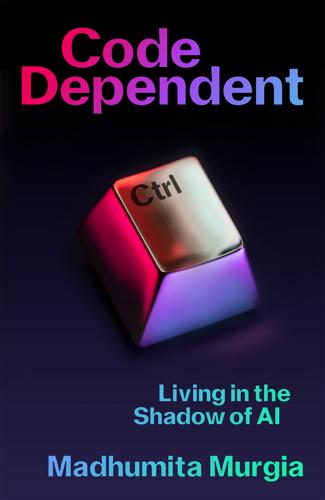
Code Dependent: Living in the Shadow of AI
by
Madhumita Murgia
Published 20 Mar 2024
GANs are not the only tool available to make deepfakes, as new AI techniques have grown in sophistication. In the past two years, a new technology known as the transformer has spurred on advances in generative AI, software that can create entirely new images, text and videos simply from a typed description in plain English. AI art tools like Midjourney, Dall-E and ChatGPT that are built on these systems are now part of our everyday lexicon. They allow the glimmer of an idea, articulated in a few choice words, to take detailed visual form in a visceral way via simple apps and websites. AI image tools are also being co-opted as weapons of misogyny. According to Sensity AI, one of the few research firms tracking deepfakes, in 2019, roughly 95 per cent of online deepfake videos were non-consensual pornography, almost all of which featured women.2 The study’s author, Henry Ajder told me that deepfakes had become so ubiquitous in the years since his study that writing a report like that now would be a near-impossible task.
…
Amber Yu, a freelance illustrator, told the website Rest of the World that the video game posters she designed earned her between $400 and $1,000 a pop.16 She’d spend weeks perfecting each one, a job requiring artistry and digital skills. But in February 2023, a few months after AI image-makers such as Dall-E and Midjourney were launched, the jobs she relied on began to disappear. Instead, she was asked to tweak and correct AI-generated images. She was paid about a tenth of her previous rate. A Guangdong-based artist who worked at one of China’s leading video game companies said she wishes she ‘could just shoot down these programs.’
…
Endnotes INTRODUCTION 1 M. Murgia, ‘My Identity for Sale’, Wired UK, October 30, 2014, https://www.wired.co.uk/article/my-identity-for-sale. 2 J. Bridle, ‘The Stupidity of AI’, The Guardian, March 16, 2023, https://www.theguardian.com/technology/2023/mar/16/the-stupidity-of-ai-artificial-intelligence-dall-e-chatgpt#:~:text=They%20enclosed%20our%20imaginations%20in,new%20kinds%20of%20human%20connection. 3 Hanchen Wang et al., ‘Scientific Discovery in the Age of Artificial Intelligence’, Nature 620, no. 7972 (August 3, 2023): 47–60, https://doi.org/10.1038/s41586-023-06221-2. 4 Meredith Whittaker, ‘The Steep Cost of Capture’, Interactions 28, no. 6 (November 10, 2021): 50–55, https://doi.org/10.1145/3488666. 5 V.

Blood in the Machine: The Origins of the Rebellion Against Big Tech
by
Brian Merchant
Published 25 Sep 2023
Ambitious start-ups like Midjourney, and well-positioned Silicon Valley companies like OpenAI, are already offering on-demand AI image and prose generation. DALL-E spurred a backlash when it was unveiled in 2022, especially among artists and illustrators, who worry that such generators will take away work and degrade wages. If history is any guide, they’re almost certainly right. DALL-E certainly isn’t as high in quality as a skilled human artist, and likely won’t be for some time, if ever—but as with the skilled cloth workers of the 1800s, that ultimately doesn’t matter. DALL-E is cheaper and can pump out knockoff images in a heartbeat; companies will deem them good enough, and will turn to the program to save costs.
…
With app-based work, jobs are precarious, are subject to sudden changes in workload and pay rates, come with few to no benefits and protections, place the worker under intense, nonstop surveillance, and are highly volatile and unpredictable. And the boss is the algorithm; HR consists of a text box that workers can log complaints into, and which may or may not generate a response. The modern worker can sense the implications of this trend. It’s not just ride-hailing either—AI image-generators like DALL-E and neural net–based writing tools like ChatGPT threaten the livelihoods of illustrators, graphic designers, copywriters, and editorial assistants. Streaming platforms like Spotify have already radically degraded wages for musicians, who lost album sales as an income stream years ago. Much about Andrew Yang may be suspect, but he did predict correctly that anger would again spread like wildfire as skilled workers watched algorithms, AI, and tech platforms erode their earnings and status.
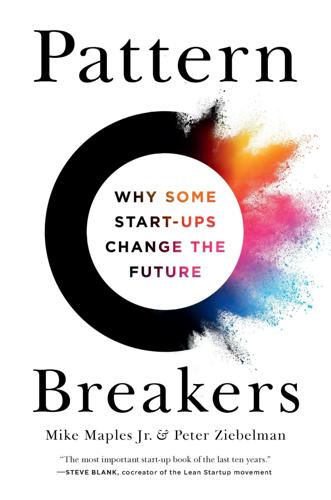
Pattern Breakers: Why Some Start-Ups Change the Future
by
Mike Maples
and
Peter Ziebelman
Published 8 Jul 2024
For example, seemingly out of nowhere, OpenAI’s launch of ChatGPT reached a hundred million monthly active users two months after its launch; this compares to TikTok’s reach of a hundred million in nine months. Such movements sweep across the human landscape and usher in a new future that differs radically from even the recent present. In mere months following OpenAI’s launch of DALL·E and ChatGPT, the world’s perception of artificial intelligence underwent a seismic shift, evolving more dramatically than it had in all the years before 2022. Occasionally, incumbents can create movements, for example when Apple introduced the iPhone or when Amazon introduced Amazon Web Services.
…
Maddie took a job with OpenAI for a different reason than the immediate potential upside of the stock or how she might be compensated. Her tour of duty with Sam offered her two pivotal opportunities. First, being at OpenAI gave Maddie an unparalleled vantage point into the evolving AI landscape. She witnessed firsthand the creation of innovative models like GPT-3 and DALL·E. OpenAI’s dedication to releasing open-source AI tools, paired with a stellar team of AI experts, placed Maddie right at the nexus of AI advancements. Its strong focus on safety and its dedication to responsibly deploying AGI meant that OpenAI would also play a significant role in AI ethics and policy dialogues across multiple sectors, from art to law to medicine.

These Strange New Minds: How AI Learned to Talk and What It Means
by
Christopher Summerfield
Published 11 Mar 2025
Until recently, people working in the creative industries felt comfortably shielded from the incursion of AI, because we all believed that the capacity to dream up beautiful cover art for a novel or design striking graphics for a fantasy video game was much harder to automate than (say) double-entry bookkeeping or legal casework. However, it is now clear that artists, designers, and scriptwriters are next in line for automation, and it was fear of AI replacement that drove the Writers Guild of America strike which brought Hollywood’s film industry to a standstill for several months in 2023. DALL·E 3, the AI-mediated image generation tool that is now embedded in GPT-4, can produce astonishingly professional-looking images and designs – but only, of course, because it has copied human-made material from the internet. The copyright battles over who owns this content – and the gargantuan proceeds from generative AI – have already begun, and will no doubt rumble on for years.
…
Stephen, 75 collective action/collective behaviour, 327–31, 338 Colossus, 21 Comet restaurant, Washington DC, 181–2 Common Crawl, 182–3, 184, 185, 188 complexity, 47, 163–9, 250, 282 compositionality gap, 280 computation, 20–23, 36, 44, 67, 74, 85, 103, 106, 109, 110–11, 112–16, 130, 131, 136, 137, 144, 305, 308, 332, 333–4 computer anthropomorphizing, 71–2 brain, used as metaphor for, 144–7 coding, see coding invention of, 20–23 Moore’s Law and, 29, 305 confabulation, 139, 194–9, 202, 203, 234, 280, 319 consciousness, 122, 123–6, 131, 234, 260 conspiracy theories, 181–3, 195, 197, 198, 306 Constitutional AI, 192, 205, 235 constitutional rules, 208 context context length, 108–9, 124, 250 context vector, 98–9, 100, 106 context window, 250, 255, 333 in-context learning, 159, 163, 164, 268, 291, 308 cookies, 249, 285 CoPilot, 285 cortex, 35, 125, 130, 254, 298–9 Covid-19 pandemic, 12–13, 50, 182, 198, 199, 219, 230, 263, 339 C++, 177, 250, 334 creativity, 3, 4, 52–3, 176, 226, 268, 272, 279, 281, 327, 335 crosswords, 33, 276–81 curiosity, 58, 152, 266 Curiosity, 46 cyberattacks, 316, 318–19 Cyc, 28–9, 200–201, 280 D DALL·E 3, 335–6 Darwin, Charles, 67, 115, 129, 138, 152, 163, 309; On the Origin of Species, 128 data availability, 300–301 date, current, 291–2 Deep Blue, 278 deep learning/deep neural networks, 3–4, 6, 19, 31, 38–9, 40–53, 86, 90–91, 112, 116, 147, 167, 169, 254, 255, 267, 279, 311, 332.
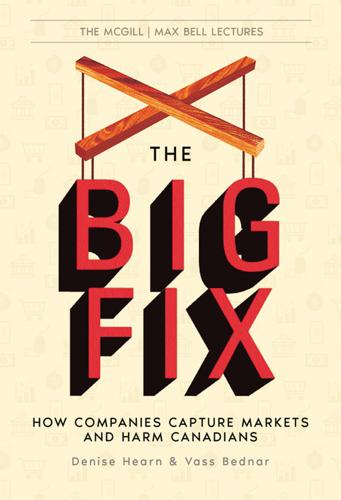
The Big Fix: How Companies Capture Markets and Harm Canadians
by
Denise Hearn
and
Vass Bednar
Published 14 Oct 2024
But it also has meant that companies have increasingly moved away from creating value through production to capturing value through erecting moats around intellectual capital and data. This makes it exceedingly hard for new entrants to disrupt incumbents. It is important to note that not all AI models are run by the tech giants. For instance, ChatGPT and Dall-E were created by OpenAI, Claude by Anthropic, and France-based Mistral AI was founded by former employees of Meta Platforms and Google DeepMind. That has led to some optimism that if all firms have access to similar quality AI, there may be a democratising effect that boosts dynamism. But in many cases, AI production is likely to strengthen the advantages of dominant firms, create barriers to entry, and widen existing gaps between bigger companies and smaller ones.

The Thinking Machine: Jensen Huang, Nvidia, and the World's Most Coveted Microchip
by
Stephen Witt
Published 8 Apr 2025
With this, the age of “programmable biology” drew closer, in which the four elemental nucleotide bases of RNA could be made to act like the 0s and 1s of computer binary. A profusion of “generative” AI products arose, promising to revolutionize creative industries by synthesizing content on command. OpenAI’s DALL-E, or competing Midjourney and Stable Diffusion, could in a minute or two create artwork of any description in the style of any artist. Start-ups Udio and Suno offered competing music-generation applications that could generate songs in any genre. Jasper could be used to create effective marketing campaigns in seconds.
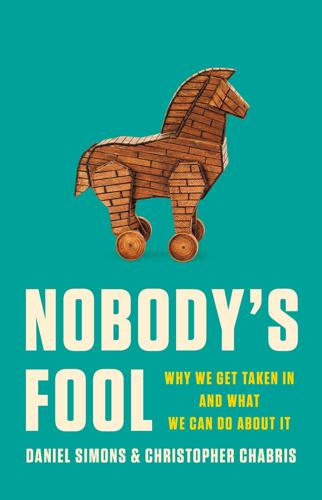
Nobody's Fool: Why We Get Taken in and What We Can Do About It
by
Daniel Simons
and
Christopher Chabris
Published 10 Jul 2023
Their expertise in developing sophisticated computational models is genuine, but it is not the expertise necessary to evaluate whether a model’s output constitutes generally intelligent behavior. People who make these predictions appear to be swayed by the most impressive examples of how well new machine learning models like ChatGPT and DALL-E do in producing realistic language and generating beautiful pictures. But these systems tend to work best only when given just the right prompts, and their boosters downplay or ignore the cases where similar prompts make them fail miserably. What seems like intelligent conversation often turns out to be a bull session with a bot whose cleverness comes from ingesting huge volumes of text and responding by accessing the statistically most relevant stuff in its dataset.
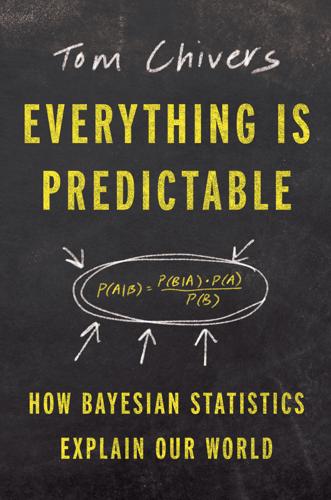
Everything Is Predictable: How Bayesian Statistics Explain Our World
by
Tom Chivers
Published 6 May 2024
Artificial intelligence is essentially applied Bayes. It is, at its most basic level, trying to predict things. A simple image classifier that looks at pictures and says they’re of a cat or a dog is just “predicting” what a human would say, based on its training data and the information in the picture. DALL-E 2, GPT-4, Midjourney, and all the other extraordinary AIs that are wowing people as I write, the things that can hold conversations with you or create astonishing images from simple text prompts, are just predicting what human writers and artists would make from a prompt, based on their training data.
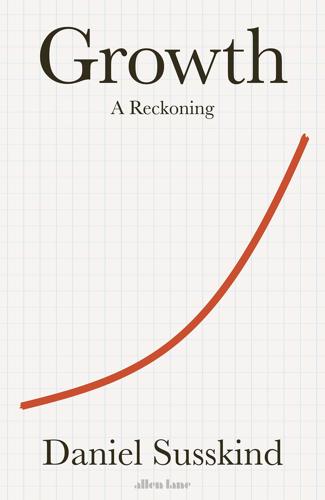
Growth: A Reckoning
by
Daniel Susskind
Published 16 Apr 2024
Yet there is no obvious reason to think that there is a strong correlation between tasks that machines find hard to perform and the ones that human beings happen to find fulfilling. On the contrary, many of the dullest tasks (for instance, restocking grocery shelves) are hard to automate, while many of the most interesting ones (for instance, designing a building) are much more automatable. The latest wave of ‘generative’ AI systems, such as DALL-E and ChatGPT, are a clear demonstration of this fact, easily performing activities that were thought to require faculties like ‘creativity’ from human beings. This last observation leads us back to the original, more extreme fear: that the newest technologies now present a challenge to the number of jobs that will remain, not simply their nature.

AI 2041: Ten Visions for Our Future
by
Kai-Fu Lee
and
Qiufan Chen
Published 13 Sep 2021
Consider that just months after its release, people had built applications on top of GPT-3 that included a chatbot that lets you talk to historical figures, a music composition tool that finishes guitar tabs that you start, an app capable of taking half an image and completing the full image, and an app called DALL.E that can draw a figure based on a natural language description (such as “a baby daikon radish in a tutu walking a dog”). While these apps are mere curiosities at present, if the flaws above are fixed, such a platform could evolve into a virtuous cycle in which tens of thousands of smart developers create amazing apps that improve the platform while drawing more users, just like what happened with Windows and Android.
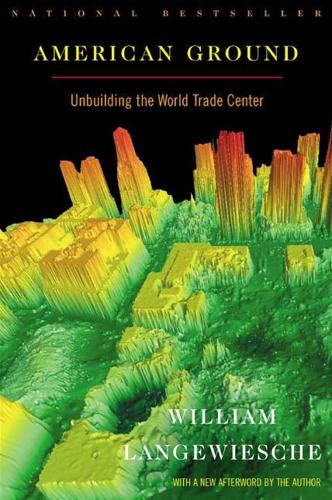
American Ground: Unbuilding the World Trade Center
by
William Langewiesche
Published 1 Jan 2002
Tra le prime affermazioni imbarazzanti ci sono state quelle di Van Romero, esperto in esplosivi e vicepresidente del New Mexico Institute of Mining and Technology, il quale ha pubblicamente dichiarato che secondo lui la responsabilità dei crolli andava attribuita a cariche esplosive piazzate in precedenza, aggiungendo che gli aerei non erano altro che un’esca per attirare le squadre di soccorso. È stato subito sommerso dalle e-mail dei teorici della cospirazione. Dopo appena una settimana ha tentato di rimangiarsi tutto, sconfessando pubblicamente se stesso e sottoscrivendo l’opinione sempre più diffusa secondo cui le torri erano crollate per l’effetto combinato degli incendi e dei danni causati dall’impatto. «Sono molto turbato...